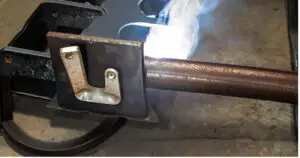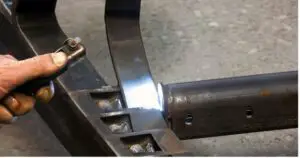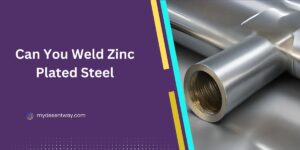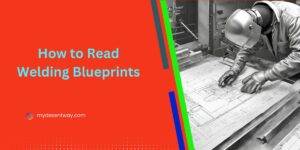Table of Contents
In the world of automotive repairs and fabrication, the question often arises: Can you weld a leaf spring? Leaf springs are vital components of a vehicle’s suspension system, responsible for providing support and absorbing shocks. However, over time, these leaf springs can wear out or break, leading to the need for repairs or replacements. Welding a leaf spring can be a cost-effective solution, but it’s essential to understand the process, safety precautions, and potential challenges involved. In this article, we will delve into the world of leaf spring welding, providing you with all the necessary insights.
Can You Weld a Leaf Spring Safely?
Welding a leaf spring can be done safely and effectively, but it’s crucial to follow best practices and safety guidelines. If done correctly, a welded leaf spring can provide reliable performance and extend the lifespan of your vehicle’s suspension system.
What Are Leaf Springs?
Leaf springs, also known as carriage springs or cart springs, are a type of suspension spring commonly used in vehicles. They consist of multiple layers or “leaves” of spring steel stacked on top of each other. These leaves flex and bend to absorb shocks and support the weight of the vehicle.
Types of Leaf Springs
There are various types of leaf springs, including:
Parabolic Leaf Springs
Parabolic leaf springs have a curved shape, which allows for a smoother ride. They are commonly found in contemporary automobiles.
Multi-Leaf Springs
Multi-leaf springs consist of multiple thin leaves stacked together. They provide excellent load-carrying capacity.
Mono-Leaf Springs
Mono-leaf springs have a single, thick leaf and are commonly found in older vehicles.
The Welding Process
Now that we have a basic understanding of leaf springs, let’s explore the process of welding them.

Can Leaf Springs Be Welded?
Yes, leaf springs can be welded, but it’s essential to approach this task with caution and follow specific guidelines.
When Should You Weld a Leaf Spring?
Welding a leaf spring is typically considered when:
Repairing Cracks or Breaks
If a leaf spring has cracks or breaks, welding can be a viable option to restore its functionality.
Adding Leaves
In some cases, additional leaves may be welded to a leaf spring to increase its load-carrying capacity.
Step-by-Step Welding Process
Welding a leaf spring involves several steps:
Preparation
- Assess the Damage: Examine the leaf spring carefully to identify the extent of the damage.
- Clean the Area: Ensure that the area to be welded is clean and free of rust, dirt, or grease.
Welding
- Select the Right Welding Method: Generally, arc welding is the preferred method for welding leaf springs.
- Preheat the Leaf Spring: To prevent cracking, preheat the leaf spring to a specific temperature based on the material type.
- Welding Technique: Use a weaving motion while welding to distribute the heat evenly.
- Post-Welding Treatment: After welding, the leaf spring may require tempering or heat treatment to relieve stress and ensure strength.
Safety Precautions
Safety should always be a priority when welding leaf springs:
Protective Gear
- Wear Safety Glasses: Protect your eyes from sparks and debris.
- Use Welding Gloves: Shield your hands from heat and molten metal.
- Respiratory Protection: Use a mask or respirator to avoid inhaling fumes.
Adequate Ventilation
Welding should be done in a well-ventilated area to dissipate fumes and gases.
Conclusion
In conclusion, welding a leaf spring can be a viable option for repairing or modifying these crucial suspension components. However, it’s not a task to be taken lightly. Proper preparation, the right welding method, and strict adherence to safety precautions are essential for a successful outcome. If you are unsure about your welding skills, it’s advisable to consult a professional. So, can you weld a leaf spring? Yes, you can, but do it right to ensure your safety and the performance of your vehicle.
Video by iBECK ENGINEERING
FAQs
Is welding a leaf spring a permanent solution?
Welding can be a durable solution if done correctly. However, the longevity of the repair depends on the quality of the weld and the extent of the damage.
Can I weld leaf springs at home?
While it’s possible to weld leaf springs at home, it’s recommended to have the job done by a skilled professional to ensure safety and effectiveness.
Are there alternatives to welding leaf springs?
Yes, alternatives include replacing the leaf spring with a new one or using aftermarket suspension upgrades.
Can I weld different types of leaf springs together?
Welding different types of leaf springs together is not recommended, as it can affect the suspension’s performance and safety.
What is the cost of welding a leaf spring compared to replacing it?
Welding is often more cost-effective than replacing a leaf spring, but the exact cost can vary based on the extent of the damage and labor charges.









